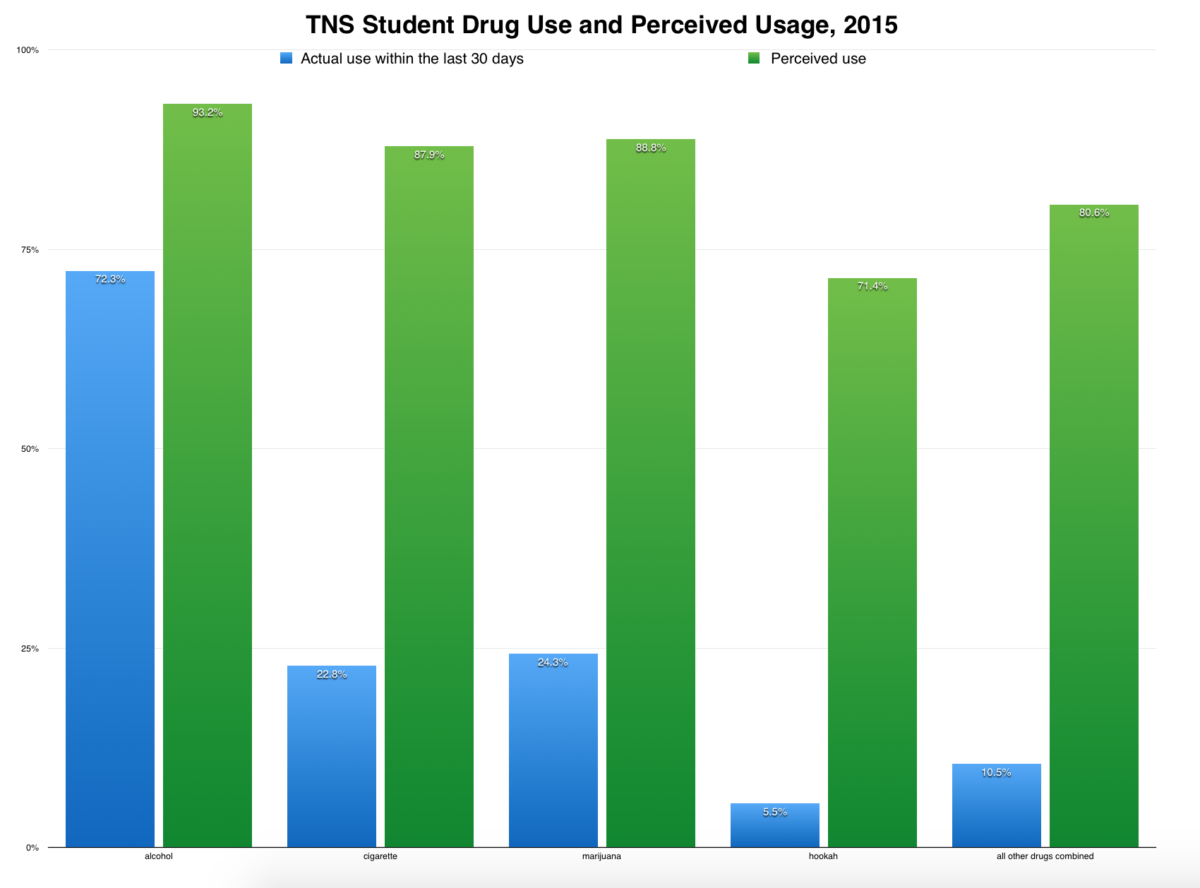Students at The New School seem to think more of their peers use drugs than actually do, according to the American College Health Association.
Data from the Spring 2015 New School Executive Summary from the National College Health Assessment (NCHA), which surveyed 977 New School students, shows that students’ perceived use of drugs is much higher than their actual use. This misconception may be leading more students to try using. As the old adage says, if everyone is doing it – why not try?
When surveyed, students reported that they believed that 87.9 percent of the student body smokes cigarettes. “I feel like everyone smokes at The New School,” Lang Freshman, Katherine Badala said. In reality, only 22.8 percent of students reported any use of cigarettes within 30 days prior to the survey.
“I believe that drug use at The New School, as well as at other universities, is lower than what students believe,” Tamara Oyola-Santiago, assistant director of Wellness and Health Promotion at the New School’s Student Health Services said.
Usage of cigarettes is higher among New School students than the national average of 10.6 percent, when compared with data from the Spring 2015 Reference Group Executive Summary from the NCHA, which surveyed 93,034 students at 108 schools.
According to the survey, alcohol is the most commonly used drug at The New School and nationally – with 72.3 percent of students reporting use at TNS and 64.9 percent of students reporting use on the national survey. Hookah, unsurprisingly, is the least used drug at The New School with only 5.5 percent of students having reported use (within 30 days prior to the survey). Check out the graph to see what drugs New Schoolers are using the most – and what we think they’re using the most.

Some health professionals believe that higher perceived drug use leads to a justification of actual use. This is called the false consensus effect, which Sandy Wolfson, author of Psychology of Addictive Behaviors defines as, “the tendency to overestimate the extent to which others share one’s own attitudes and behaviors.”
A 2009 study on French college students found that “other substance use, injunctive norms (friends’ approval) and descriptive norms (friends’ smoking prevalence) are associated with tobacco use.”
Badala said she tried smoking upon coming to Lang. “Because I saw so many people doing it,” she said, “you just kind of assume that everyone does it because it’s what you’re actually seeing – because it’s visual, it’s right there in front of you.”
Oyola-Santiago noted that the urban setting of the school may contribute to the heightened perceived use of cigarettes. “Students see many people smoking outdoors, and they may or may not be students or faculty,” she said.
Badala believes that having access to data on actual use might help change the smoking culture at the New School. “I feel like it would actually cause a change in people’s mentalities at TNS,” she said.
Oyola-Santiago encourages students to visit Student Health Services on the 3rd floor of 80 5th ave to learn more.







